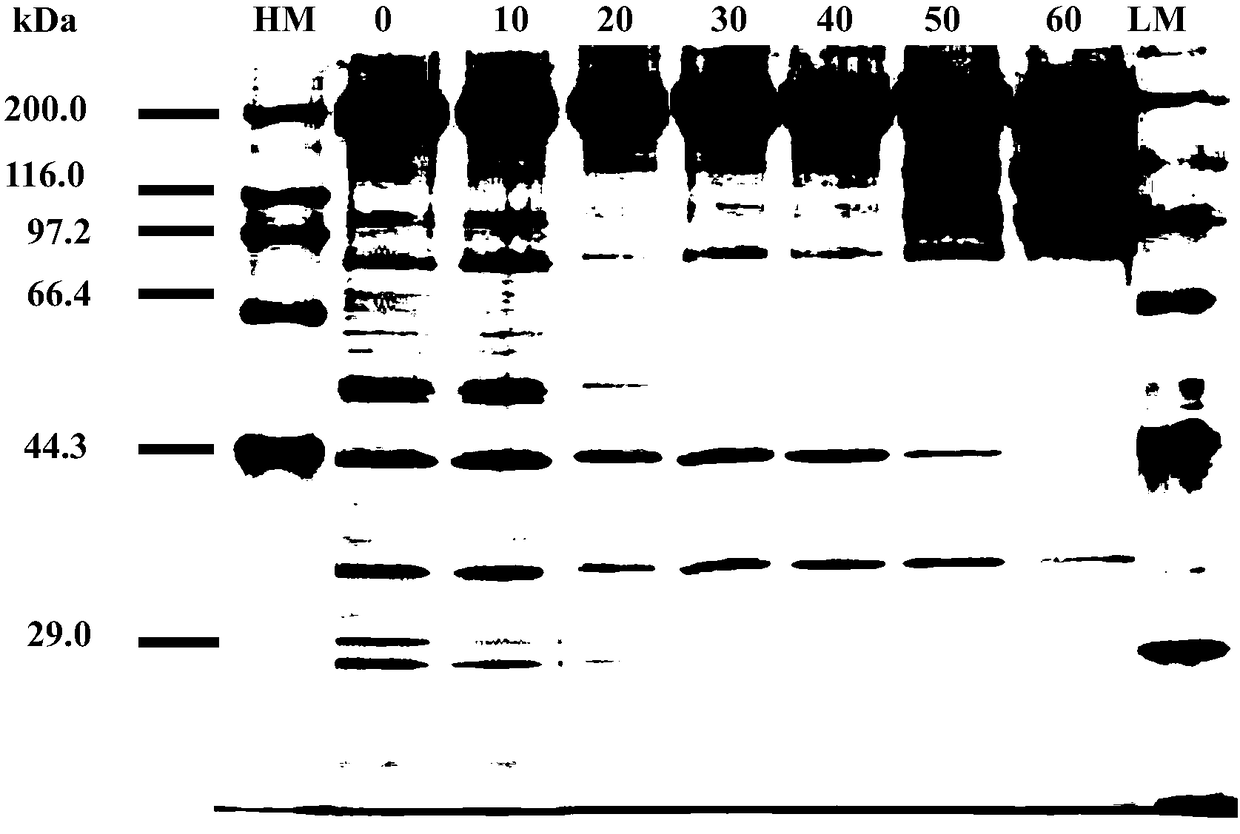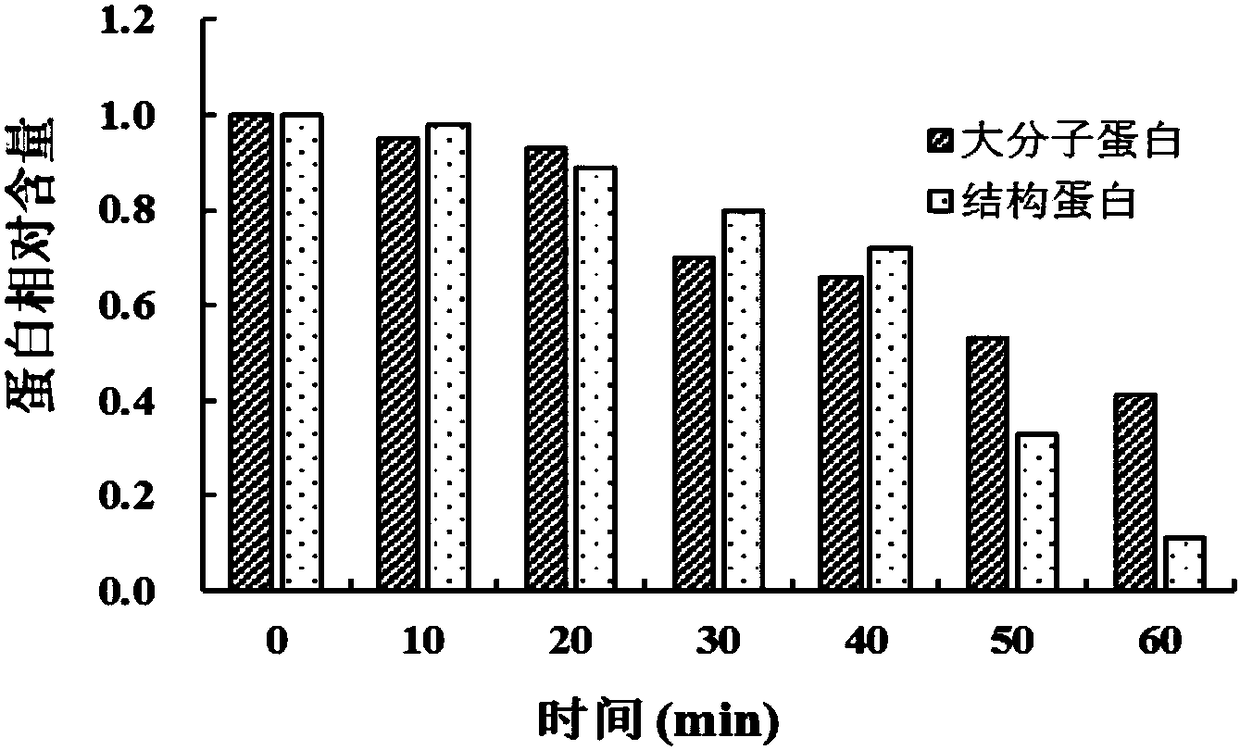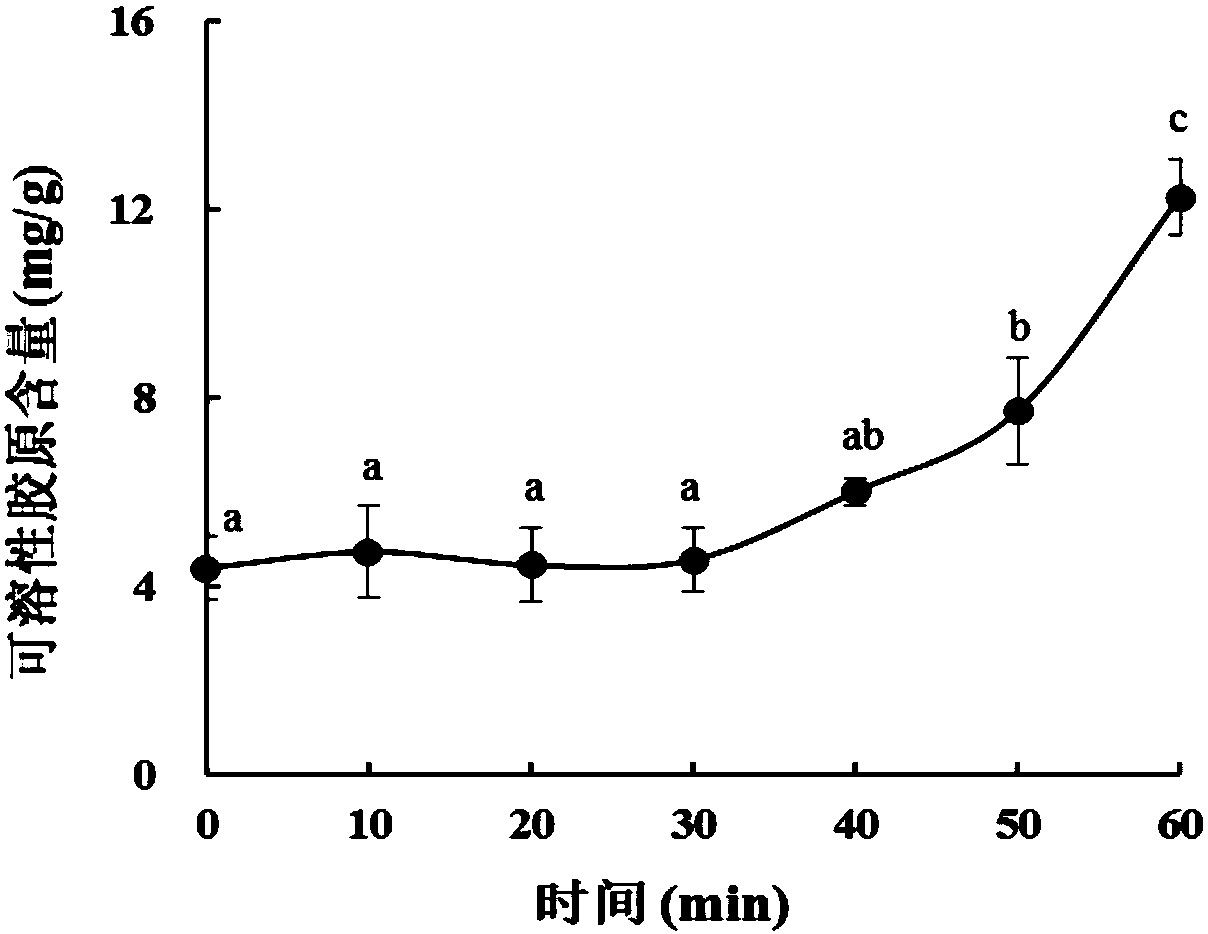Method for tenderizing sea cucumbers based on biological enzymes
A bio-enzyme and sea cucumber technology is applied in food science, functions and applications of food ingredients, etc. It can solve the problems of collagen denaturation, poor tenderization effect, and poor eating taste, so as to increase the content of soluble collagen and facilitate industrial production , Improve the effect of tenderness and taste
- Summary
- Abstract
- Description
- Claims
- Application Information
AI Technical Summary
Problems solved by technology
Method used
Image
Examples
Embodiment 1
[0031] (1) Raw material pretreatment: slaughter fresh sea cucumbers in an ice-water bath, remove intestines and spouts, clean the body wall with ice-water mixture, and then divide them into blocks with a size of 1.5×1.5 cm;
[0032] (2) Collagenase tenderization: Soak the sea cucumber tissue pieces obtained in (1) in type I collagenase (purchased from Shanghai Chaorui Biotechnology Co., Ltd.) with an enzyme activity concentration of 300 U / mL, and use 0.02 mol of collagenase solution / L of pH7.4 phosphate buffer solution, the enzyme dosage of collagenase solution is 300U per gram of sea cucumber body wall tissue, the soaking temperature is 37°C, and the soaking time is selected from 0, 10, 20, 30, 40, 50, 60min .
[0033] The SDS-PAGE electrophoresis patterns of protein components of sea cucumbers tenderized by collagenase for different times are as follows: figure 1As shown, among them, the macromolecular protein is a protein with a molecular weight of 200kDa; the structural ...
Embodiment 2
[0035] (1) Raw material pretreatment: slaughter fresh sea cucumbers in an ice-water bath, remove intestines and spouts, clean the body wall with ice-water mixture, and then divide them into blocks with a size of 1.5×1.5 cm;
[0036] (2) Cathepsin tenderization: Soak the sea cucumber tissue pieces obtained in (1) in a solution of cathepsin K (purchased from Shanghai Biyuntian Biotechnology Co., Ltd.) with an enzyme activity concentration of 350 U / mL. / L of pH5.7 phosphate buffer solution, the enzyme dosage of cathepsin solution is 500U per gram of sea cucumber body wall tissue, the soaking temperature is 37°C, and the soaking time is selected from 0, 10, 20, 30, 40, 50, 60min .
[0037] After sea cucumbers were tenderized with cathepsin for 30 minutes, both macromolecular proteins and structural proteins began to degrade. Figure 5 It is the relative content change of macromolecular protein and structural protein obtained by using ImageJ image analysis software according to el...
Embodiment 3
[0039] (1) Raw material pretreatment: slaughter fresh sea cucumbers in an ice-water bath, remove intestines and spouts, clean the body wall with ice-water mixture, and then divide them into blocks with a size of 1.5×1.5 cm;
[0040] (2) Pepsin tenderization: Soak the sea cucumber tissue pieces obtained in (1) in a solution of pepsin (purchased from Shanghai Sangon Bioengineering Co., Ltd.) with an enzyme activity concentration of 250 U / mL. The pH 2 acetate buffer solution of L was prepared, the enzyme dosage of pepsin solution was 400U per gram of sea cucumber body wall tissue, the soaking temperature was 37°C, and the soaking time was selected from 0, 10, 20, 30, 40, 50, 60 minutes.
[0041] The macromolecular protein of sea cucumbers began to degrade after pepsin tenderization for 20 minutes, and the structural proteins began to decrease significantly after 30 minutes. Image 6 It is the relative content change of macromolecular protein and structural protein obtained by usi...
PUM
 Login to View More
Login to View More Abstract
Description
Claims
Application Information
 Login to View More
Login to View More - Generate Ideas
- Intellectual Property
- Life Sciences
- Materials
- Tech Scout
- Unparalleled Data Quality
- Higher Quality Content
- 60% Fewer Hallucinations
Browse by: Latest US Patents, China's latest patents, Technical Efficacy Thesaurus, Application Domain, Technology Topic, Popular Technical Reports.
© 2025 PatSnap. All rights reserved.Legal|Privacy policy|Modern Slavery Act Transparency Statement|Sitemap|About US| Contact US: help@patsnap.com



